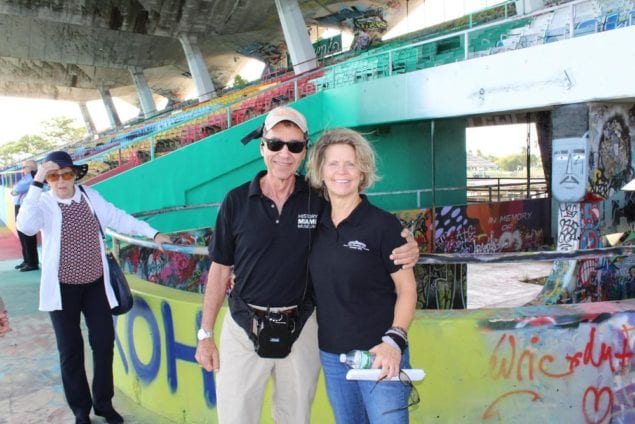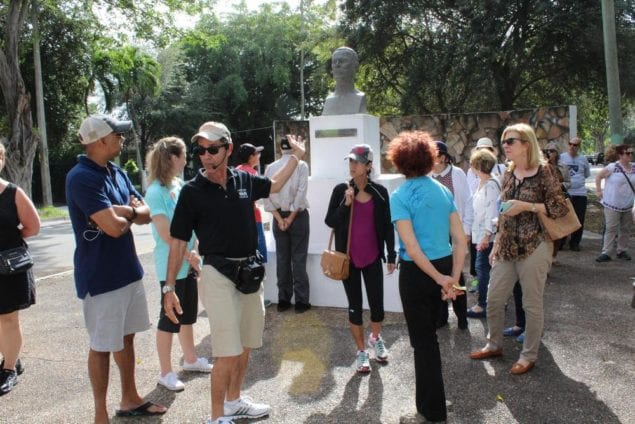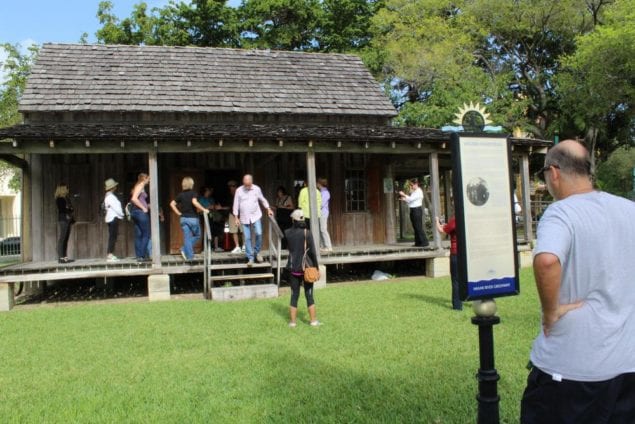The Dade Heritage Trust joined with HistoryMiami on Dec. 17 to conduct a guided bus tour of a number of Miami-Dade County’s most endangered and historically significant sites.
Dr. Paul George of HistoryMiami led the tour with additional information provided by Christine Rupp, Dade Heritage Trust’s executive director.
About 46 people signed up for the four-hour event and boarded a plush tour bus at the headquarters of Dade Heritage Trust in the historic and restored office building of Dr. James Jackson, located on downtown property overlooking Biscayne Bay.
Rupp welcomed the tour attendees and introduced Dr. George, explaining the significance of the tour.
“This is one of the very first times that Dade Heritage Trust and HistoryMiami have partnered on something like this,” she said.
Rupp explained that the 11 most endangered sites are so designated due to their cultural and historical significance and their contributions to Miami’s sense of place. She said that they deserve not only recognition but also protection, inspired plans and restoration so they are not lost.
“These venues are threatened due to neglect, potential demolition, lack of planning, code enforcement issues, political snafus, and sometimes a combination of these factors,” Rupp said. “Learning about the history, current condition and future plans for these venues is essential if we are to preserve them for future generations.”
After a brief video explaining its history and current condition, featuring the architect, the City of Miami Marine Stadium was the first stop and Dr. George led everyone through the now neglected and graffiti-festooned structure. The landmark is to be rescued and restored as part of a new complex.
The tour then went past Vizcaya; the historic Pan Am Terminal (now Miami City Hall); parts of Coconut Grove, including the 1897 E.W.F. Stirrup House, the Barnacle and the Coconut Grove Playhouse. Also noted were the houses of the black Bahamian neighborhood with their local history.
The bus next went north to Little Havana, down Calle Ocho (Eighth Street) and a number of landmarks now threatened by potential future development due to the area’s proximity to downtown, the beaches and the expansion of Brickell business and residential projects.
“You can’t blame people who bought a home here for $80,000 20 years ago for selling it when they can get $500,000 now,” Rupp said.
Dr. George added, “The center city is on fire with redevelopment.”
In Lummus Park a walking tour included visits to Fort Dallas, an 1800s Army structure, and the 1850s Wagner Homestead building, both relocated to the park from their original sites.
In Historic Overtown the D.A. Dorsey House replica and the Dorsey Memorial Library building were noted.
Dr. Deborah Keeler, a former librarian, English professor and longtime resident attending the tour, said she enjoyed the informative history expedition.
“I’ve lived in Miami since 1990 and I did not know 90 percent of this information,” Keeler said. “I did not know these wonderful landmarks existed and we really need the city and county to get more resources, or other sources of funding to be found to support these historic areas.”
For information on upcoming tours visit historymiami.org and dadeheritagetrust.org.









